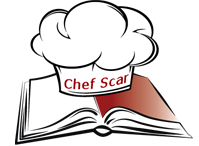In June 2000, my wife and I along with two other couples, friends of many years with whom we had traveled extensively, spent a glorious week in a rented villa called Solaria, which is located in the Tuscan hilltown of Vagliagli. Vagliagli is a small town about 9 miles north of Siena on the road to Radda in Chianti and Castellina in Chianti, two larger and better-known towns. Each day, we piled into our rented van and explored the numerous hilltowns in the vicinity, beside the two mentioned above, and the city of Siena. These included: Colle di Val d’Elsa, Cortona, Monteriggioni, San Gimignano, Volterra and, of course, Florence (Firenze). We never had a bad meal or bad wine in any one of them and the weather was perfect the entire week.
When the rental was over, one couple went on to Germany and the other returned to the States, while my wife and I took off for Venice by train, where we planned to stay for a full, glorious week. We had been to Venezia on two previous occasions, both for very brief visits. One was in the summer of 1970 on our first trip to Italy, and at that time, we stayed for only two days. The second was even shorter; one bleak wintery day in November 1997, when we took the train up from Florence, where we were visiting our younger daughter during her semester abroad. On that occasion, we left Santa Maria Novella Station on a 5:30 am train and returned there about 1:00 am, having spent only 10 hours in Venice and either on trains or waiting for them the remainder of the time.
Visiting Venice the first time, we fell in love with the La Serenisima and afterwards read extensively both fiction and non-fiction books centered around its people, history and architecture. This longer third visit provided us with the perfect opportunity to explore many of its treasures at a leisurely pace. On one of those excursions, through the alleys of Dorsoduro, we came upon an unexpected treasure which resulted in another favorite family recipe. We had spent the morning at the Peggy Guggenheim Museum, which fronts on the Grand Canal. I had read a review in Gourmet Magazine on a fabulous Venetian seafood restaurant, Antica Trattoria La Furatola located at 2870a Calle Lunga de San Barnaba, Dorsoduro, less than ½ mile from the museum. We were hungry after touring the museum and from the map thought this close by. However, after a frustrating 45 minutes of innumerable twists and turns through alleys and piazzas, crossing and re-crossing canals, we finally came upon the restaurant, only to discover that it was closed for lunch on Wednesdays.
But our disappointment quickly turned to serendipity, as we discovered a tiny, unassuming treasure just down the alley from La Furatola. We had walked right past it earlier but failed to take notice, as we were so focused on finding La Furatola. When we walked through the door of Enoteca Osteria – Sandro and inhaled the aromas emanating from the kitchen, we wondered if it would be a suitable place for lunch. Any hesitation we might have felt was quickly removed by Sandro’s warm welcoming smile. He asked if we would like to sit in the back courtyard, which we welcomed since it was a beautiful sunny, blue sky day. I asked him what smelled so good; he said it was his Pasta Fagioli, which may be known more familiarly as Pasta Fazool!
We shared a bottle of chilled white wine from the Friuli region and I ordered the Pasta Fagioli, while my wife ordered pasta with gorgonzola and zucchini. Sandro’s Pasta Fagioli was unlike any Pasta Fazool I had ever eaten prior to that revelatory day. First, it lacked the tomato base that was such a prevalent ingredient in my mother’s recipe; second, it was redolent with herbs, which seemed to me to be sage and rosemary; and third there was a distinct salted pork flavor, which I thought might be prosciutto. Later, after much experimentation and consulting of several cookbooks (ones which were focused more on Northern Italian style cooking, rather than the Southern Italian style that I had grown up with) I developed my recipe for Pasta e Fagioli alla Veniziana. I hope one day to return to Venice and to thank Sandro for inspiring me to try to develop this version of Pasta Fazoole, which is a favorite meal among our family and friends.
Another big favorite in our home is a pasta dish that I developed after a visit to that ‘famous city by the bay’. Read all about it in: I Found This Dish in San Francisco, High on Russian Hill it Called to Me.





